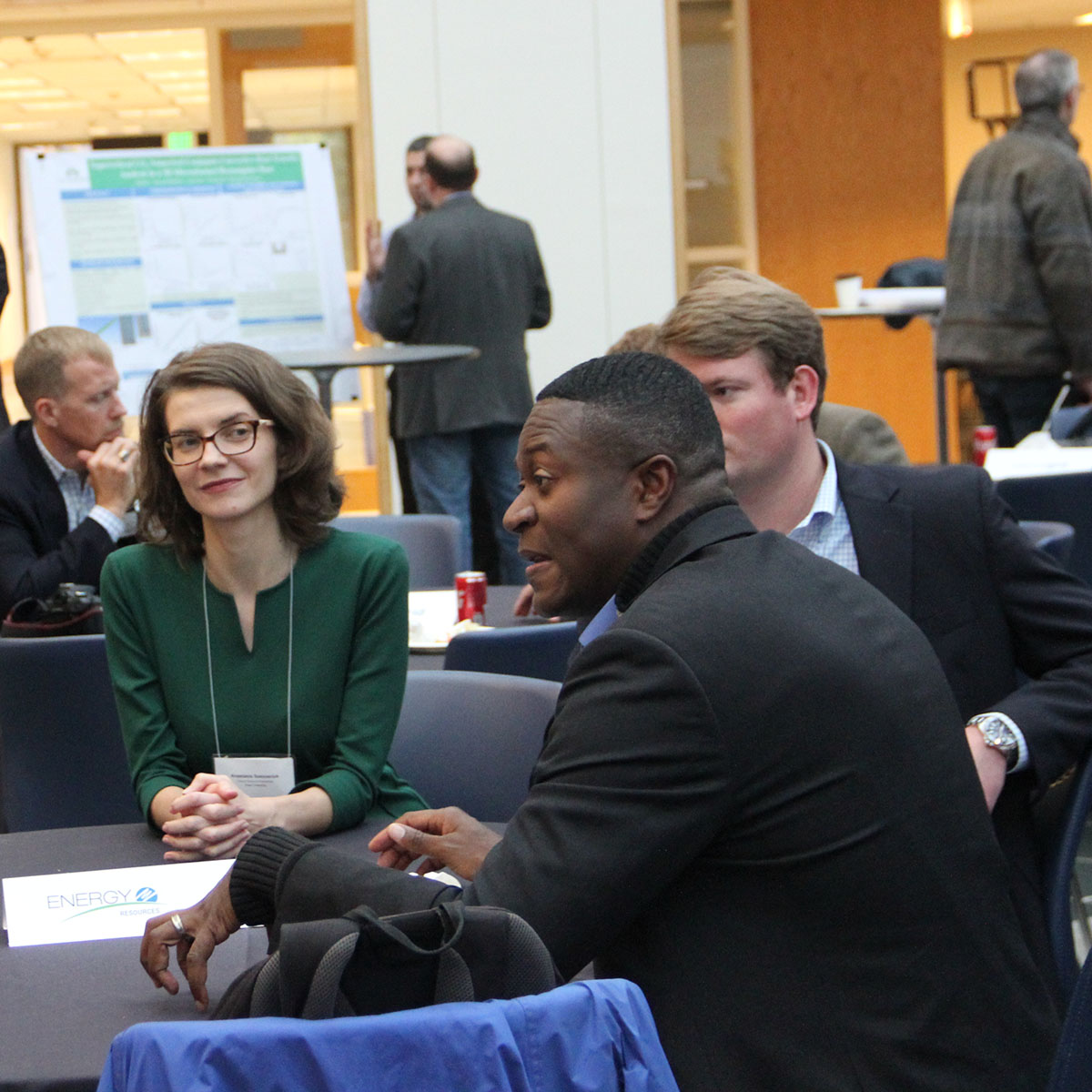The energy industry is facing a crisis, and it’s not the one you think.
Climate change is a crisis for the entire planet, but utility companies face a more immediate threat: flat demand.
“Suddenly, across much of the developed world, there’s been a decoupling of economic growth from energy demand,” said Professor Daniel Vermeer, founder and director of EDGE, Duke University's Center for Energy, Development, and the Global Environment. “Economies continue to grow, but demand for energy has gone stagnant.”
There are a variety of causes — increased focus on energy efficiency, shifts from heavy industry to a service economy which uses less resources, better management of the ebb and flow of peak demand, and more users generating their own power through solar panels.
“This is a fundamental threat to a whole set of players in this industry who premised their business model on ever-expanding growth,” Vermeer said.
That conundrum was at the heart of Duke Energy Week, an annual student-led summit that explores the latest issues, dilemmas and challenges, focusing on people at the forefront of a rapidly changing industry.
One of those people is Sayun Sukduang, a 2004 graduate of Fuqua’s Cross Continent MBA program. Sukduang is president and chief executive officer of Engie Resources, a non-residential retail electricity provider, whose parent company owns power plants generating more than 100 terawatts across the globe. Engie sold off its power plants in the U.S., creating a war chest for investments in forward-thinking energy companies.
That radical shift of business model piqued Vermeer’s interest.
“For decades they had made money by building energy infrastructure and now they are going to make money in part by getting rid of the need for that infrastructure,” Vermeer said. “It’s a 180-degree turn from where they were. They saw the writing on the wall, and rather than trying to resist it, they have embraced their own disruption.
"Did society really need what we do? The answer is no"
Sukduang started out as an energy infrastructure engineer but said he came to understand the world did not need more infrastructure.
“Did society really need what we do? The answer is no, and the answer was right in our faces for a decade and a half,” he said.
Since selling off its power plants, ENGIE has been investing across the board, in energy efficiency firms, facility management, renewable energy production, and data insights.
To explain how the U.S. already has enough power capacity to meet demand for the next century, Sukduang likens the grid to a highway.
“Interstate 10 through Houston was once the widest highway in the world, at 26 lanes,” he said. “But even then, traffic was slow during rush hour. That could be fixed with a 100-lane highway, but that would feel like a huge waste of resources at 2 in the afternoon, when the road is mostly empty. Behind every electrical outlet is 60Hz, even when you don’t need it – the equivalent of that 100-lane highway. That’s what everyone has been promoting since grid was invented.”
The energy industry has come to think of the energy system as creating a power supply that must be sold, Sukduang said.
“Thomas Edison sold lightbulbs,” he said. “The grid was a necessary element to sell light. How we turned it into something to sell kilowatt hours is something we need to challenge.”
"Everybody sees these changes coming"
Sukduang sees energy as a service, not a product.
“Energy as a service is delivering the outcome you want,” he said. “The outcome is not, ‘I want a kilowatt hour.’ The outcome is using energy because you want to wake up feeling warm in the winter, or cool in the summer, or need light, or to charge your phone.”
Sukduang said technology innovations now offer opportunities to provide more valuable services to customers by better utilization of our existing system.
“I’m willing to bet you do not care if your freezer is set at 30 degrees, 28 or 22 degrees, as long as it’s below freezing,” he said. “But can you repurpose that freezer, beyond preserving food, to orchestrate a more efficient grid? Could we turn it down to 20 degrees at 2 in the morning and make sure that compressor is not drawing power at 7 in the morning when everybody wants to turn on their lights and use the toaster? The answer is yes – all the technology exists to do that, but we just haven’t invested in those outcomes.”
Vermeer is excited about Sukduang and others’ bold experiments. Our future energy system must be more capable, less polluting, and more resilient, Vermeer said, and the technologies and business models to do that are beginning to take shape.
“Everybody sees these changes coming," he said. “Everybody knows the current model won’t last, but nobody knows what the future’s going to be. So you see a lot of experimentation: a little energy efficiency here, a little demand response there, a little of paying people not to use energy. Sayun has brought all of those together in one business model and bet the firm’s future on it. Some firms are sitting back and waiting to see where the world’s going to go, but the ones to watch are not waiting for the future, they’re shaping it.”
